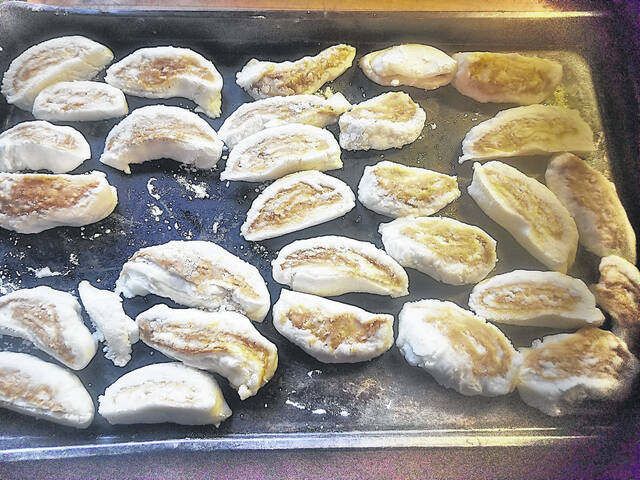
People all over celebrate the holiday season with food traditions. Why are these foods served and where did they come from?
Turkeys, 22 million of them, are eaten for Christmas, according to tonydelpia.com, plus 318 million pounds of ham. Back in the early years of America, people ate goose because families lived off the land. They didn’t want to eat cows or chickens because chickens produced eggs and cows produced milk. As families grew, it was realized that turkeys were cheaper to raise than most birds. In the 19th century, turkey became a staple on American tables.
Boar’s heads were used as an edible centerpiece on tables of the wealthy in Tudor England (1485 and 1603). The boar’s head came from the pagan tradition to honor Freyr, the Norse god of fertility and harvest. Lower class people began using a yule ham because it was more affordable and equally delicious.
Christmas food is also laced with legends such as panettone, an Italian sweet bread originally from Milan. Legend has it that possibly back in the 1400s, Duke Falconer fell in love with a baker’s daughter, Adalgisa. The two met in secret and created the rich bread, which revived the baker’s business. At Christmastime they added dried fruit and citron to the bread. The baker soon became wealthy and this allowed the duke and the baker’s daughter to get married.
A traditional Danish dish is Ris a La Mande. It is a rice pudding with an almond hidden in it. The tradition stems from a 16th century French tradition involving hiding a bean in an epiphany cake. When the tradition of Ris a La Mande started, it was said that whomever found the almond had to kiss someone of the opposite sex. Today, whomever finds the almond gets a gift.
Rosca De Reyes, Three Kings Cake, is served on Jan. 6, the day of Epiphany. The cake commemorates the visit to Baby Jesus in Bethlehem by the three wise men. When the cake is made, a plastic baby or bean is baked into the cake. Whomever finds the baby or the bean is to have good luck throughout the next year. The cake is also usually garnished with nuts and fruit.
A tradition in the Cornett family of Hillsboro is making potato candy. This candy came to the United States around the early 1900s. This candy was popular among the Irish of Appalachia, who were unable to afford expensive candy.
A potato, powdered sugar and peanut butter are all you need. You can’t actually taste the potato, but it acts like a binder and keeps the treat from being too sweet.
The Snyder family of Leesburg has always enjoyed bread pudding during the holidays. A traditional British pudding is plum pudding served at Christmas time. This pudding originated with the Roman Catholic Church. It wanted a 13-ingredient pudding to represent Christ and his apostles. Families took turns stirring up the batter from east to west to commemorate the Magi’s journey. This was started on “Stir it up Sunday”, or the Sunday before Advent season begins.
Sources for this story included thespruceeats.net, almostnordic.com and food.com.
Jackie Wolgamott is a stringer for The Times-Gazette.


